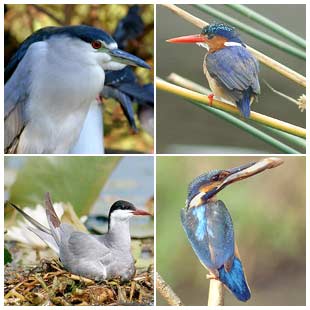Countless species of animals, plants, and microorganisms occupy every nook and cranny from land to the deep sea on our planet. They shape this world, converting light into fuel, transforming carbon and nitrogen between inorganic and organic forms, and… enhancing the beauty of park flowers. In many places, such as tropical regions, hundreds of species coexist, while in others, like high-altitude areas, very few species inhabit. Biologists are striving to explain WHY?
 |
What Determines Species Diversity? |
The interaction between the environment and living organisms, as well as interactions among organisms, plays a crucial role in determining whether diversity is high or low. Additionally, it is influenced by human distribution levels, predator-prey relationships, and other food web networks. However, the precise mechanisms by which various pressures coordinate to produce the diversity we observe today remain a significant mystery.
The challenge in finding answers is growing. The foundational data is still too sparse; for instance, we do not know precisely how many species of animals and plants currently exist on Earth, and the situation is even worse with microorganisms, as we don’t even know where to begin. As researchers explore evolution and the limits of diversity, they face the perplexing issue of lacking a standardized scale, as evolution occurs over timescales ranging from a few days to millions of years. Furthermore, within a species, various forms of variation occur robustly, increasing diversity, leading scientists to feel ensnared in a labyrinth. One question that remains unanswered is whether genetic variation creates new species, and what truly influences speciation?
To gain a thorough understanding of biodiversity, it is believed that a global effort is necessary, involving fossil evidence, laboratory and field research, genome comparisons, and in-depth statistical analyses. Some major projects include “the United Nations’ Millennium Project” and the global marine microbial gene review program, which could help improve existing foundational databases, but these are merely “a scratch on the surface”. It is believed that models can help designate when a species diverges into two new species. Currently, a rising subfield known as evo-devo (evolutionary developmental biology) allows researchers to investigate how genes related to development may contribute to evolutionary processes. These collaborative efforts hope to help reconstruct the history of life.
In fact, paleontologists have made significant strides in tracing the expansion or contraction of territories of various groups of organisms over millennia. They have found that geographic distribution plays a very important role in speciation. It is hoped that future research will help unravel the mechanisms behind the overall distribution of organisms and provide many clues about mass extinction phenomena as well as the impacts of calamities on the evolution of new species.
From field results, researchers have observed that the habitat of a species has a significant influence on its morphology and behavior, particularly in terms of sexual selection, which consequently drives or constrains speciation. Evolutionary biologists have also discovered that the speciation process can be regressive, meaning populations that were previously separated can recombine, thereby avoiding the genetic divergence of similar gene pools. Evolutionary forces, such as low mutation rates or segregation bias, also significantly affect the rate of speciation. Segregation bias is a phenomenon where one or more alleles have a higher chance of being passed from one generation to the next compared to other alleles during meiosis.
In many cases, the nature of the ecosystem also causes differences in diversity: the edges of ecosystems often have fewer species compared to the core areas of the ecosystem.
Evolutionary biologists are beginning to untangle how all the aforementioned factors can intertwine in various ways to create such diverse groups of organisms. This inquiry is becoming increasingly urgent as it will reveal the nature of the current wave of extinction worldwide and help devise reasonable prevention strategies.



















































